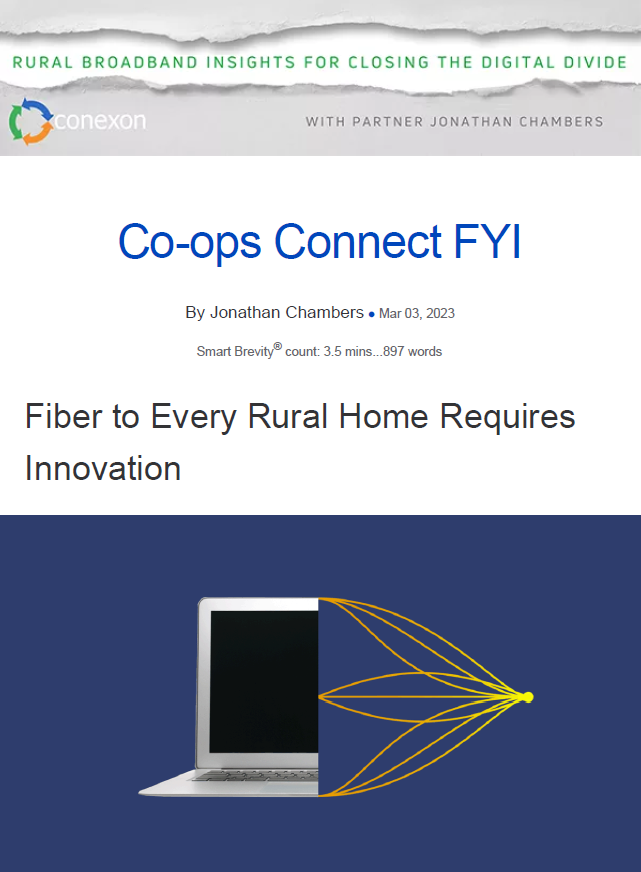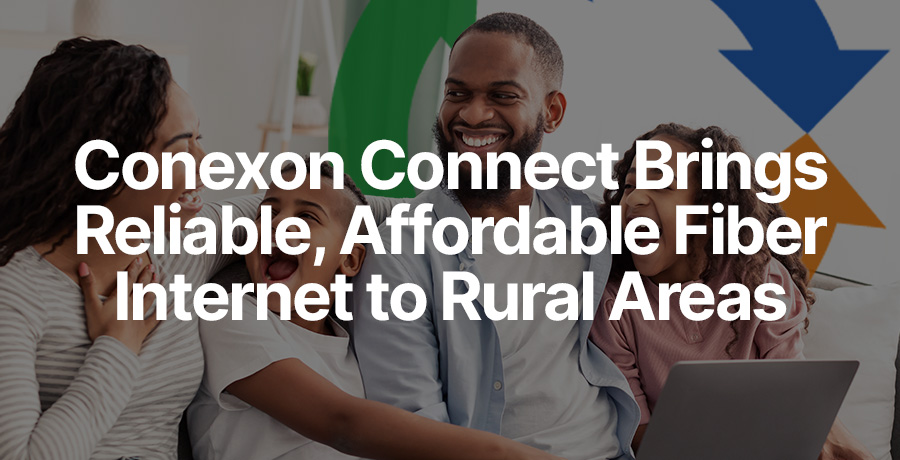Fiber to Every Rural Home Requires Innovation
March 3, 2023
When I was at the FCC working on new approaches to rural broadband, the FCC was in the midst of modeling the cost of building, operating, and maintaining fiber to every rural home.
- These early models used assumptions from GPON fiber networks being built by AT&T, Verizon, and CenturyLink.
- According to the models, the Connect America Cost Models, over $150 billion in subsidy would have been needed for fiber to every rural home, which was far more than the FCC had budgeted at the time.
A turning point:
Alyssa Clemsen Roberts (now CEO of New Hampshire Electric Cooperative) introduced me to Randy Klindt (then the General Manager of Co-Mo Connect).
Co-Mo Connect was in the midst of building a GPON fiber network to every member — 4,000 miles to 32,000 meter locations, a population density of 8 meters per mile.
- It was doing so without any government grants or subsidies.
- No fiber or cable company had built to such low-density areas without government funding.
When I compared the FCC model’s projection for the area covered by Co-Mo with the actual cost in Randy’s management of Co-Mo’s construction, I found that Co-Mo’s costs were half the FCC’s projections.
I was intrigued.
Why it matters:
I thought the difference could mean that, as a nation, we could build fiber to every rural home instead of settling for some combination of copper, wireless, and satellite.
Co-Mo’s Network Innovations
I began to study the differences between the Co-Mo fiber network construction and cable or telephone company construction.
The key differences:
1. Electric cooperative assets that lend themselves to efficient fiber construction.
— That includes GIS data; poles; ducts; conduits; rights-of-way; make-ready capabilities; member relations; the ability to borrow at low interest rates from RUS, CoBank, and CFC.
— To any electric co-op entering the fiber business, the list is familiar.
2. The construction methods and network architecture that Randy developed while at Co-Mo Connect.
— His pioneering model follows power, which is to say that the network is built substation by substation, feeder by feeder, to every electric device on the distribution network and to every meter location.
— The fiber network is integrated into the electric network to enable smart grid applications.
3. A network design that uses distributed tap architecture. — Utilizing distributed tap architecture significantly reduces fiber count.
— On Conexon-designed projects, over 85% of the miles are built with 12- or 24-count fiber.
— Most networks are built predominantly with 60-, 96-, and 144- count fiber.
— Why it matters: Using 12 or 24 strands of fiber saves money in fiber cable, splicing labor, maintenance, and repair.
The big picture:
Those who build fiber networks in cities or dense suburban areas pay less attention to fiber count as a cost savings.
- After all, saving 30-50 cents a foot is less significant in a dense urban 100-200 mile network.
But for a 4,000-mile electric co-op network, the savings are significant.
- It can mean the difference in the economic viability of fiber construction.
CommScope’s Latest Technology Innovation
Since that first Co-Mo Connect network, broadband technology leader CommScope has supplied the majority of Conexon’s fiber and distributed tap connectivity equipment.
And now:
Conexon and CommScope are reinforcing their commitment to rural broadband with a breakthrough fiber solution for electric cooperatives.
The innovation:
CommScope, working in close collaboration with Conexon, has developed a fiber-optic cable designed specifically for the rural fiber network design and architecture.
- The smaller, lighter cable footprint uses less material; is easier to install, splice and transport; and offers improved ice loading performance for lower-cost make-ready.
The impact:
The cable design will offer Conexon client co-ops protection against supply chain issues, helping them maintain their ability to build as efficiently as possible.
- This efficiency is increasingly important to rural America as electric co-ops play an ever-growing role in delivering broadband to the underserved rural communities that are often financially challenging to serve.
From Koen ter Linde, Senior Vice President Global Sales at CommScope:
“When Conexon came to us with the challenge of rising labor costs and varying logistic concerns, we worked closely with them to develop a solution to combat both of these barriers for connecting rural communities. The CommScope R&D team has worked tirelessly to design and develop this innovative new cable that makes closing the digital divide easier, and faster, to achieve.”
The bottom line:
This innovation for fiber-optic cables will streamline rural FTTH construction processes and costs across the country, helping to close the digital divide.
The Big Picture
Innovation is key to success.
Conexon and our electric co-op clients purchase over 1,000 miles of fiber cable a week.
- Week in and week out, we measure our production in terms of thousands of miles.
- Because of that, we work relentlessly to find cost savings.
- We know that if you overspend in a rural area, you will never recover those costs.
CommScope’s innovation in rural tap architecture and now in rural fiber cable has been critical to our mission – building a fiber-optic network to every rural home.
The bottom line:
This fiber cable is a big deal for rural America.
We’re thrilled once again to partner with CommScope so rural America can thrive.

